The 1968 Ford Mustang Cobra Jet GT has long been admired as one of the most iconic muscle cars of its era. Today, it returns in a new form that blends the spirit of the original with the advantages of modern engineering. Every part of this reproduction is newly built, from the body panels to the engine, giving it the look of a classic while performing like a current high-performance car.
This version uses a supercharged V8 engine that produces 710 horsepower, making it lighter and more balanced than many modern counterparts. Built in a controlled factory setting, each car follows a precise assembly process that ensures consistency and quality. With updated brakes, suspension, and emissions capability, it offers the style of 1968 with the reliability and drivability of today.
Key Takeaways
- The car combines a classic design with modern performance.
- Each model is newly built with updated parts and technology.
- It delivers strong power while maintaining everyday usability.
Overview of the 1968 Ford Mustang Cobra Jet GT
Reproduction Compared to Replica
The car is described as a reproduction, not a replica. A replica would be an exact copy, while this version keeps the core design of the 1968 Mustang but updates it with modern technology. It uses a current Ford Mustang GT engine, available in both naturally aspirated and supercharged forms. The supercharged model produces 710 horsepower and weighs about 320 pounds less than a 2022 Shelby GT500.
| Feature | Reproduction Model | Original 1968 Mustang |
|---|---|---|
| Engine | Modern Mustang GT with Roush supercharger | 390 V8 and other period engines |
| Horsepower | 710 (supercharged) | Much lower, depending on trim |
| Weight | 320 lbs lighter than the modern Shelby GT500 | Heavier compared to the updated build |
| Registration | Can be tied to a donor car or registered as a replica | Standard 1968 VIN process |
Building Process from the Ground Up
Every part of the car is brand new, including the body. The company designs and assembles the unibody in-house, using automated spot welding for consistent quality and precise dimensions. The cars are built on an assembly line with 26 stations, allowing technicians to specialize in each step.
- Over 190 cars have been built and delivered.
- The factory employs about 120 workers in Orlando, Florida.
- Production output is around 60 cars per year.
This approach differs from traditional restorations, where a customer drops off an old car and waits months or years for completion. Instead, each build follows a controlled process with repeatable standards.
Approach to Design and Function
The design stays faithful to the 1968 Mustang’s appearance, but adjustments are made for modern performance. For example:
- Wheels: Increased from 14-inch to 17-inch to fit larger brakes.
- Brakes: Uses Wilwood components, with rotors just over 13 inches.
- Tires: Factory-made 17-inch options, not custom commissioned.
The body panels match the original look, so many parts from a 1968 Mustang can still fit. However, the car accommodates modern components like six-speed manual or ten-speed automatic transmissions, which are larger than the original three- or four-speed units.
Weight distribution is also improved. The naturally aspirated version achieves nearly 50/50 balance, while the supercharged version measures 52/48. This setup places the engine further back for better handling compared to older muscle cars that carried more weight over the front wheels.
Modern Engineering and Technology
Powertrain Details
The car uses a current Ford Mustang GT engine, upgraded with a Roush supercharger. This setup produces 710 horsepower, while a naturally aspirated version is also available. Despite the high output, the engine runs smoothly, idles cleanly, and can handle traffic with air conditioning on without issues.
Gearbox Choices
Buyers can select between a 6-speed manual or a 10-speed automatic. Compared to the older 3- and 4-speed units from the late 1960s, these modern transmissions are larger but deliver far more efficiency and flexibility.
Frame and Body Design
The body is newly built in-house using fresh sheet metal. Automated spot welding ensures high accuracy and strong weld quality. The design closely follows the look of the 1968 Mustang, though adjustments were made for function, such as fitting 17-inch wheels to allow for larger Wilwood brakes with 13-inch rotors.
| Feature | Classic 1968 Mustang | Reproduction Model |
|---|---|---|
| Wheel Size | 14 in | 17 in |
| Brakes | Smaller factory brakes | Wilwood, 13 in rotors |
| Body | Original steel | Newly built, in-house assembly |
Mass and Balance
The reproduction weighs about 320 pounds less than a 2022 Shelby GT500. Weight distribution is improved over the original, with the naturally aspirated version achieving nearly 50/50 balance (50.5/49.5). The supercharged model comes in at 52/48, which still provides strong handling compared to older muscle cars that carried much more weight over the front axle.
Performance Features
Engine Output and Drivetrain
The car uses a current-production Mustang GT engine paired with a Roush supercharger. This setup produces 710 horsepower while still maintaining smooth idle and everyday drivability. Buyers can choose between a 6-speed manual or a 10-speed automatic transmission, both larger and more advanced than the original 1968 options. Weight distribution comes in at 52/48 on the supercharged model, providing better balance than the stock layout.
Stopping Power
The braking package comes from Wilwood, offering modern performance and reliability. The system uses 13-inch rotors paired with larger calipers, giving the car strong stopping capability compared to the original 1968 design.
Brake Highlights:
- Manufacturer: Wilwood
- Rotor size: 13+ inches
- Designed for modern performance needs
Rims and Rubber
The car runs on 17-inch wheels, a step up from the original 14-inch size. This change allows space for the larger brake components while keeping the look close to the classic design. Tire choices in this size are more limited, but the setup balances function and appearance without moving into oversized, restomod territory.
Wheel and Tire Details:
| Feature | Spec |
|---|---|
| Wheel size | 17 in |
| Original size | 14 in |
| Purpose | Fit larger brakes, maintain classic look |
Customization and Production
Step-by-Step Build Process
Each car goes through a structured line made up of 26 stations. The build starts at the framing stage, where the body sides join the floor to form the unibody. From there, the car moves through specialized work areas, with technicians focusing on specific tasks. This method ensures consistency and efficiency across every vehicle produced.
Precision and Consistency
The company designs and assembles its own bodies in-house, using automated spot welding to keep dimensions accurate and welds uniform. Technicians repeat the same process at each station, which helps maintain a high level of reliability. By controlling every stage, they can deliver cars that meet strict standards without variation.
Yearly Output
In nearly ten years of operation, the team has built and delivered over 190 cars. With 120 employees in the Orlando, Florida, facility, they now produce about 60 cars per year. This steady pace allows for detailed craftsmanship while still meeting demand.
Registration and Legal Considerations
Using an Existing Car vs. Buying a New Chassis
Buyers can approach registration in two main ways:
- Existing Donor Car: If someone provides an original car, the new build keeps the identity of that donor vehicle. This means the finished car is legally tied to the year and model of the original.
- New Rolling Chassis: When the company supplies a brand-new body and frame, the car can be registered under replica or specialty vehicle rules. In this case, the buyer purchases the chassis and powertrain separately, then completes the process as a combined build.
This flexibility allows owners to choose the path that best fits their situation and local regulations.
Meeting Emissions Rules
The engines used are modern and capable of meeting emissions standards in their original form. However, packaging limits prevent the use of catalytic converters in these builds.
- Factory Capability: The powertrain was designed to meet emissions when installed in production vehicles.
- Current Setup: While the cars do not include catalytic converters, the engines themselves retain the ability to comply with emissions requirements if configured with the proper equipment.
This setup gives buyers confidence that the cars maintain modern drivability while balancing the realities of fitting advanced components into a classic body.
Driving Feel and Comparisons
Road Behavior
The car delivers strong power across a wide range of speeds, pulling smoothly from around 40 mph up to highway pace and beyond. With a supercharged V8 producing 710 horsepower, it responds quickly yet remains calm in traffic. Despite the output, the engine idles cleanly, runs cool with the air conditioning on, and handles daily driving without issue.
Weight balance improves over the original, landing close to 50/50 distribution in the naturally aspirated version and 52/48 in the supercharged setup. This helps the car stay composed in corners compared to older muscle cars that felt nose-heavy.
Contrast with Current Mustangs
Compared to a modern Shelby GT500, this reproduction comes in about 320 pounds lighter while offering similar horsepower. That weight difference makes it feel more agile and less bulky. The drivetrain options include a 6-speed manual or a 10-speed automatic, both larger and more advanced than the original 3- and 4-speed gearboxes.
| Feature | 1968 Reproduction | 2022 Shelby GT500 |
|---|---|---|
| Horsepower | 710 hp | ~710 hp |
| Weight Difference | Lighter by ~320 lbs | Heavier |
| Transmission Options | 6-speed manual / 10-speed auto | 7-speed dual-clutch |
| Weight Distribution | ~50/50 balance | Front-biased |
Distinct Details
The body is built new from sheet metal and assembled in-house, ensuring tight tolerances and consistent quality. Larger 17-inch wheels allow for a modern Wilwood brake package with 13-inch rotors, giving stronger stopping power while keeping the look close to the original.
Many exterior parts stay faithful to the 1968 design, but changes like wheel size and brake fitment were made for function. The engine bay remains tight, yet it manages to house a modern four-cam V8 with a supercharger. Small touches, such as billet components, add durability and strength without straying far from the classic style.


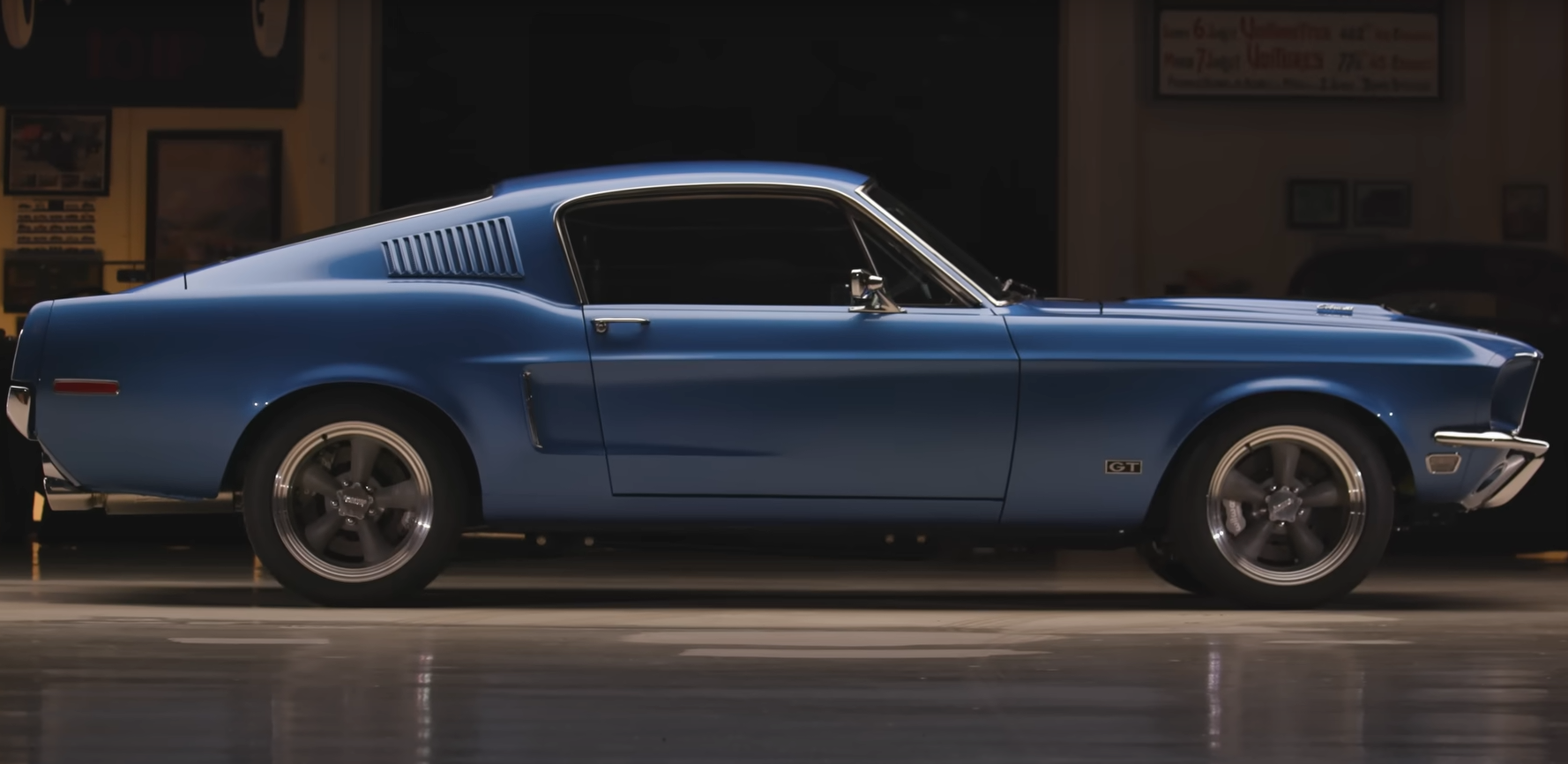
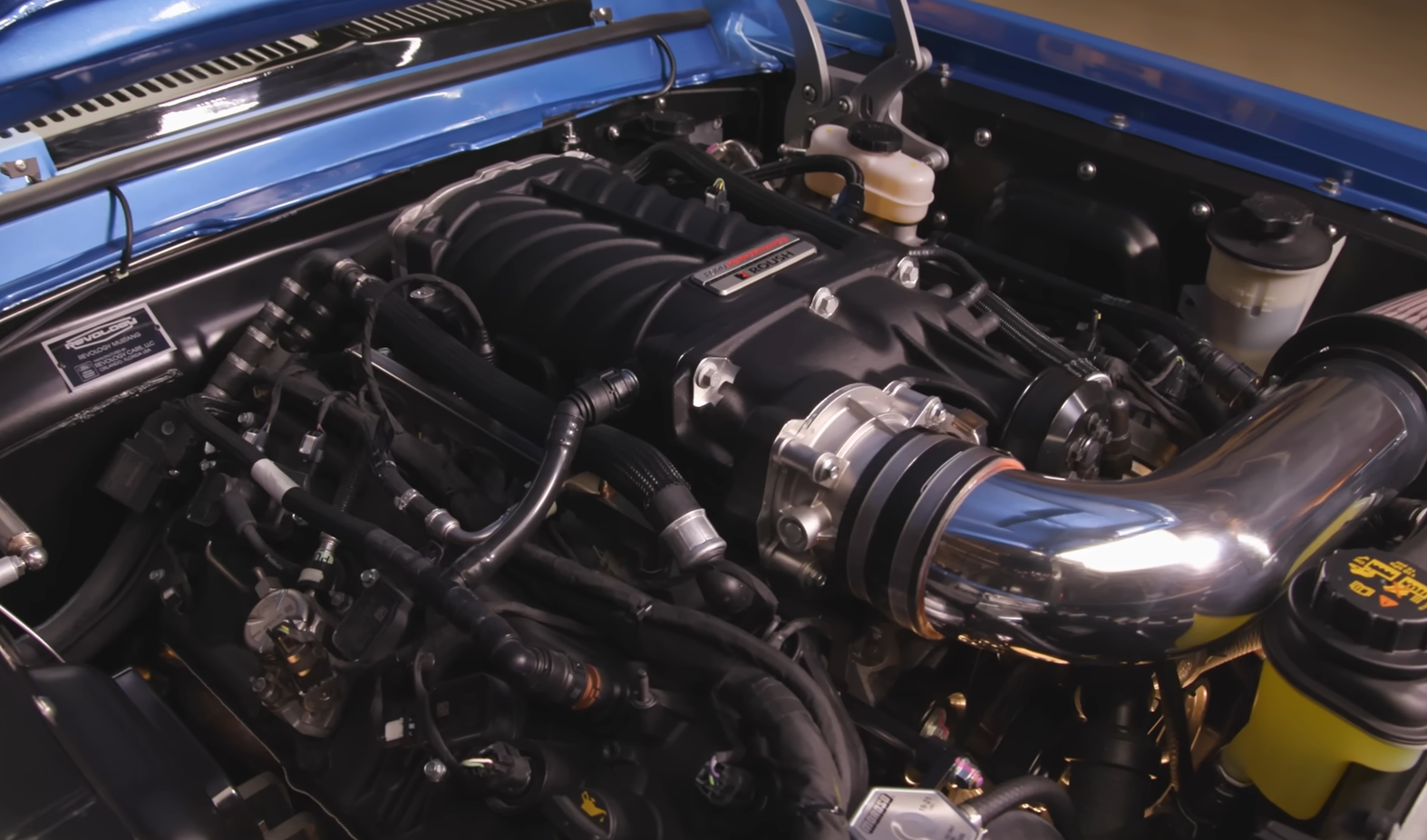
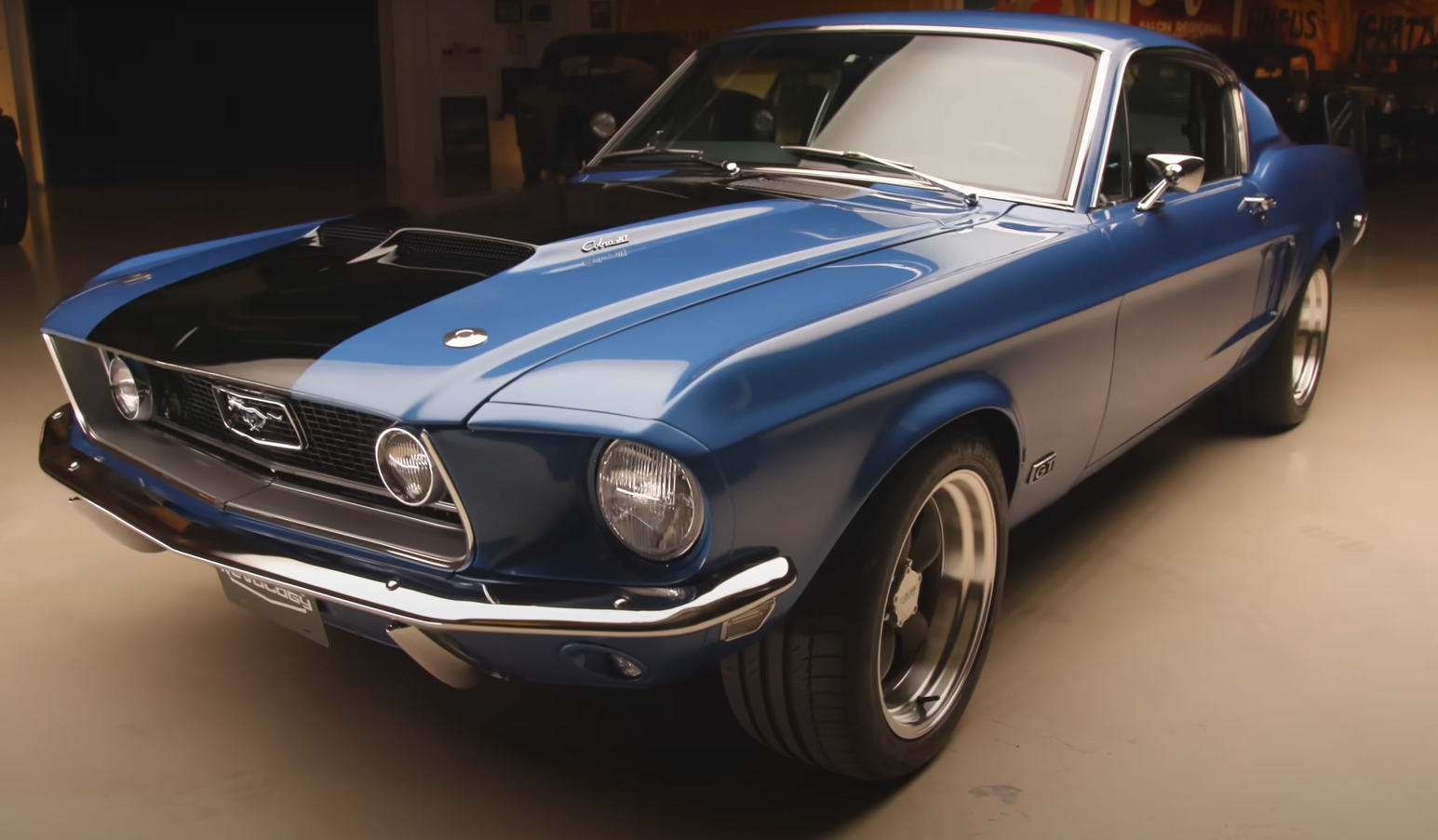
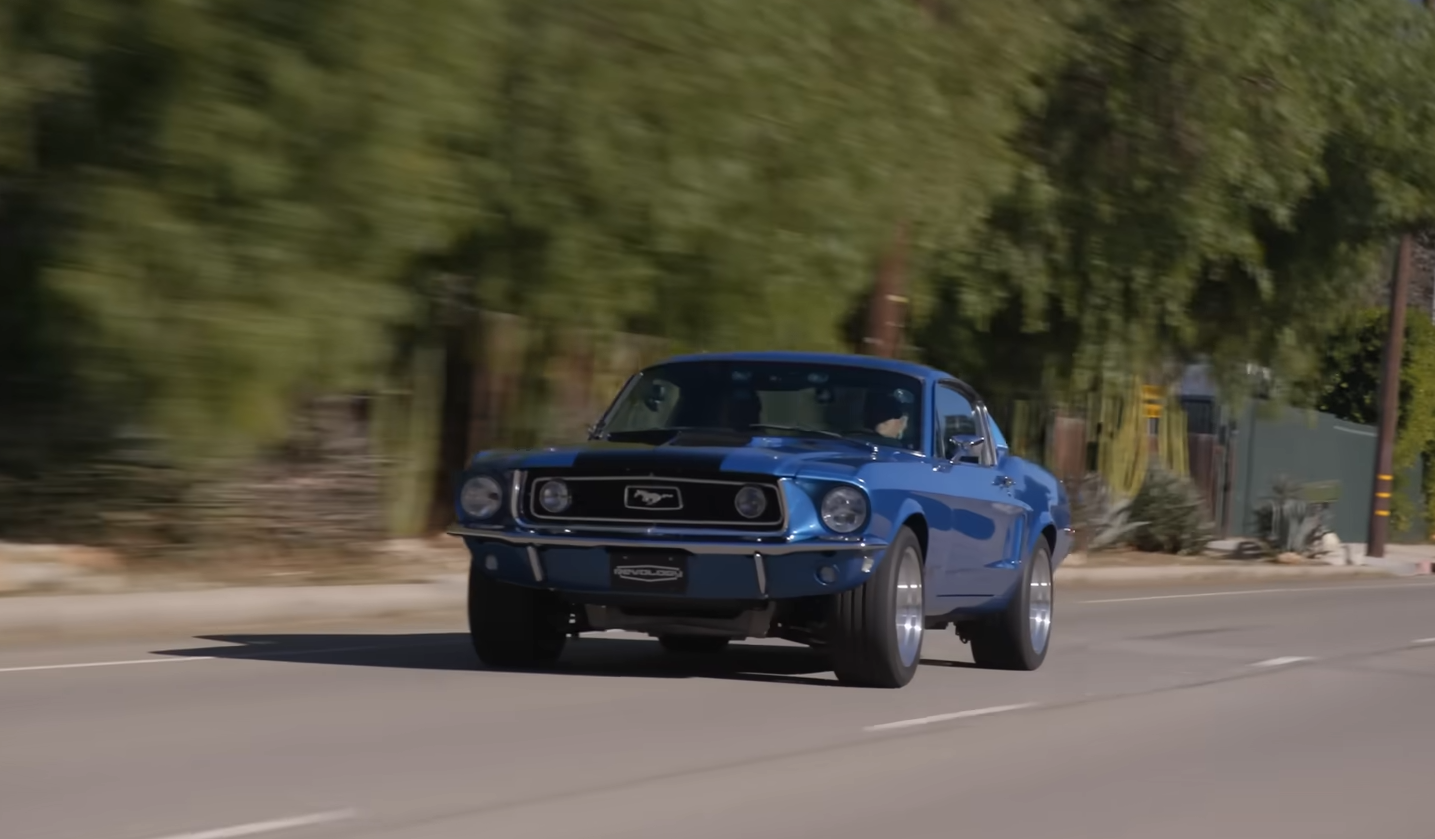
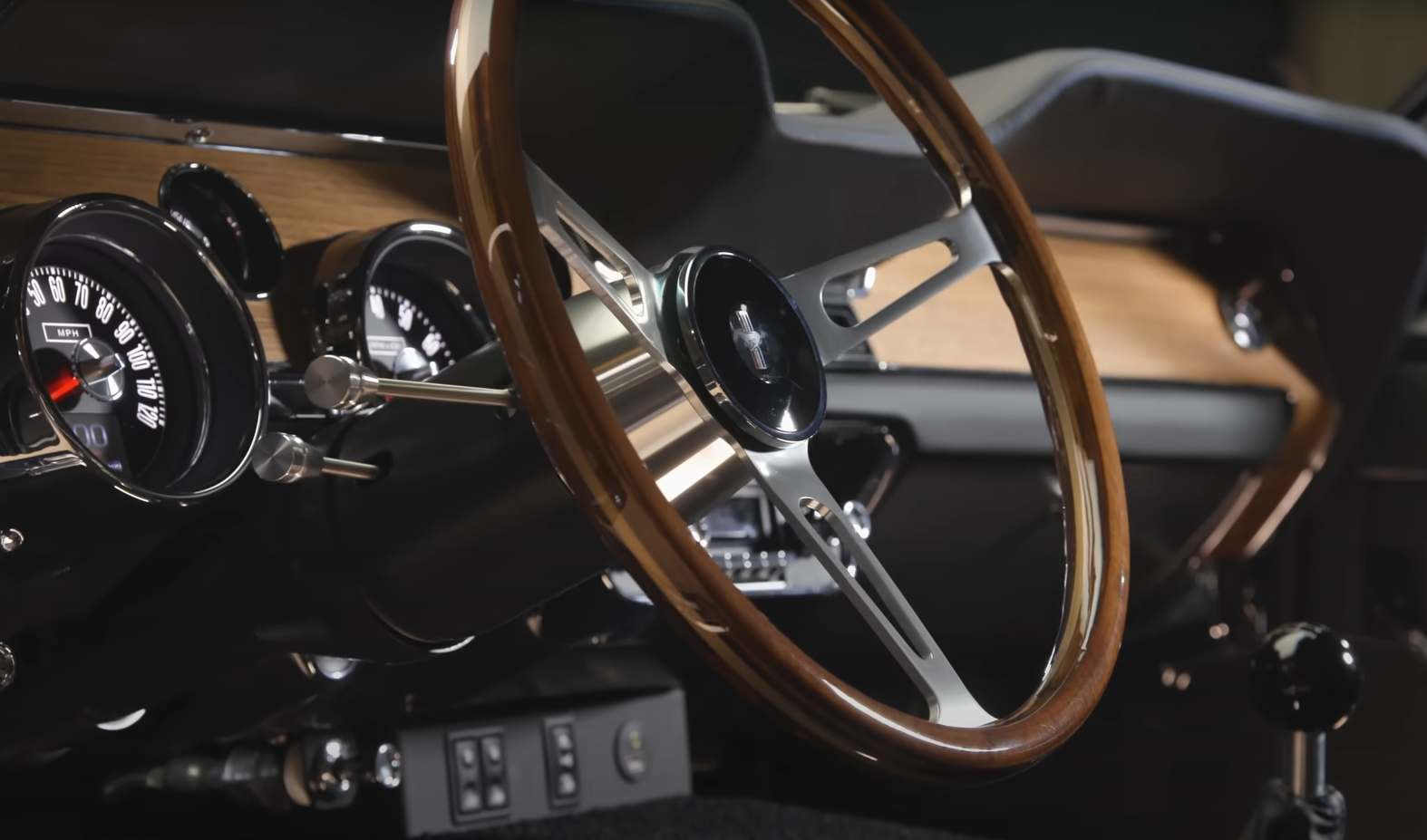
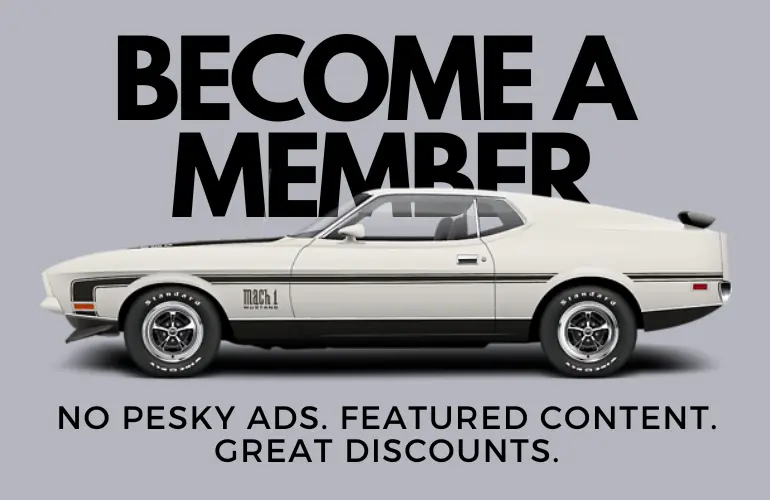

Really nice car and would be a nice addition to my 68.5 R code 4-speed with a 427 8V drivetrain and looks like a bullitt mustang.